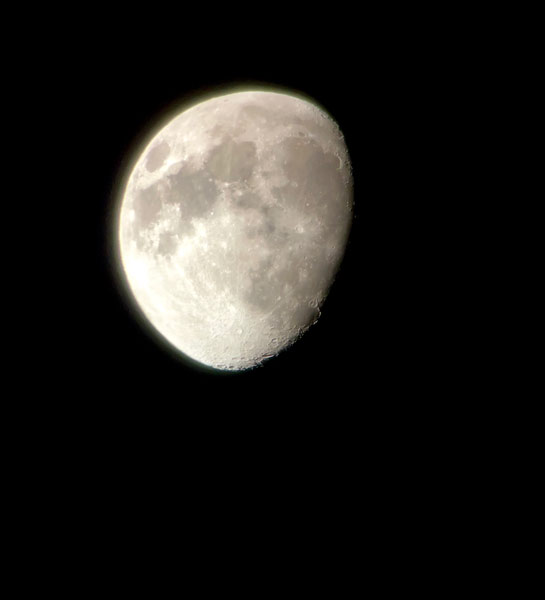Science Snippet:
Explore The Moon

What object in the solar system is closest to the Earth? The closest object is our moon. On average the moon is 238,900 miles away. That distance is almost ten times the circumference of the Earth. This sounds like a long way, but it’s close compared to the other objects in our solar system.
The moon is bright because of reflected sunlight. We can’t really see the nighttime half of the moon. Sometimes, however, you might notice that the dark portion of the moon is faintly illuminated. What you are seeing is sunlight reflecting off Earth to illuminate the dark side of the moon before reflecting back down to Earth. This effect is visible during crescent moons. Although it might seem like this light traveled much farther to reach us it has not. Since the moon’s light is really reflected sunlight, it has already traveled about 93.2 million miles to reach us. This reflected light from the Earth has traveled an extra .4 million miles, but after traveling so far this hardly makes much of a difference.
Have you ever tried to watch the moon every night during its cycle from new to full and back again? The crescent moon first appears in the evening sky, grows night by night into a bright full moon that is in the sky all night, and then shrinks back into a waning crescent moon that is only visible in the early morning sky. On average, the moon rises about fifty minutes later each night. Of course, if the moon rises 50 minutes later every night, it eventually rises and sets with the sun. This might seem strange but it happens every few weeks. Every new moon rises roughly at sunrise and sets at sunset. Full moons conversely rise at sunset and set at sunrise. Tracking the moon entirely through its cycle is impossible because during every cycle the moon will have a period when it is too close to the sun to see. This means that every time the moon starts a new cycle, someone will be the first to see the beginning of the new lunar cycle. Some people try hard to catch these “young moons”. The moon’s age is measured in hours after the minute of new moon (the start of the cycle when the moon is invisible). Without special equipment, it is rare to see a moon less than 24 hours old. The current record is a moon only 15 hours and 32 minutes old. Finding very young moons is difficult because they are quite faint and very close to the sun. To actually see one, you need one to occur just after sunset. Unfortunately, because all young moons are so close to the sun, moonset occurs shortly after sunset. They will be very low in the sky. Many young moon hunters look for these moons from the ocean so that they have clear horizons. Although you probably won’t set any records, it’s still fun to try to see the youngest moon you can from your location. It’s not as popular but you could also try to see the oldest moon you can. These old moons would rise shortly before the sun. If you have a clear eastern horizon and wake up early at the right time you might see an extremely thin crescent moon. The precise minute of the next new moon is 11:39 PM Eastern Time on June 17. When new moon is close to midnight, the next evening is a good time to try to see a very young moon. If you have a clear Western horizon, look where the sun has just set. Binoculars may help find the very thin moon but only use them after the sun has set. (Do not look into the sun!)
If you have binoculars or a telescope the moon is a great target. There are many maps of the moon that you can use to locate craters and mountains on the moon’s surface. When the moon is full, there is another thing you can do with optical devices. You can project images of the moon. If you put your hand in front of the eyepiece, you will see a little image of the moon on your hand (complete with the man on the moon!).
If you regularly note the moon’s position, you might notice some differences between the moon in summer and in winter. In winter, a crescent moon is positioned in the sky like a big smiling mouth. In summer, crescent moons take a more upright position. In winter, the full moon tracks high overhead. But in summer, the full moon is much closer to the horizon. In winter, the full moon follows the track of the summer sun across the sky. The opposite is true in the summer. The sun, the moon, and the planets all move through a part of the sky called the zodiac. When you look toward the constellations of the zodiac you are looking out along the plane of our solar system. In winter, the zodiac is high at night but low during the day. During the summer, the opposite is true
238,900 miles is far away. But the next closest object to Earth is much further away than that. At times Venus is only around 25 million miles away. That is the closest any of the planets ever come to us. But that is still almost 100 times further away than the moon. Right now, Venus is even further away from us, at over 65 million miles away. In my next articles, we will look further from the Earth to explore the other members of our Solar System.
For a list of lunar events as well as some of my favorite lunar features, click here.
